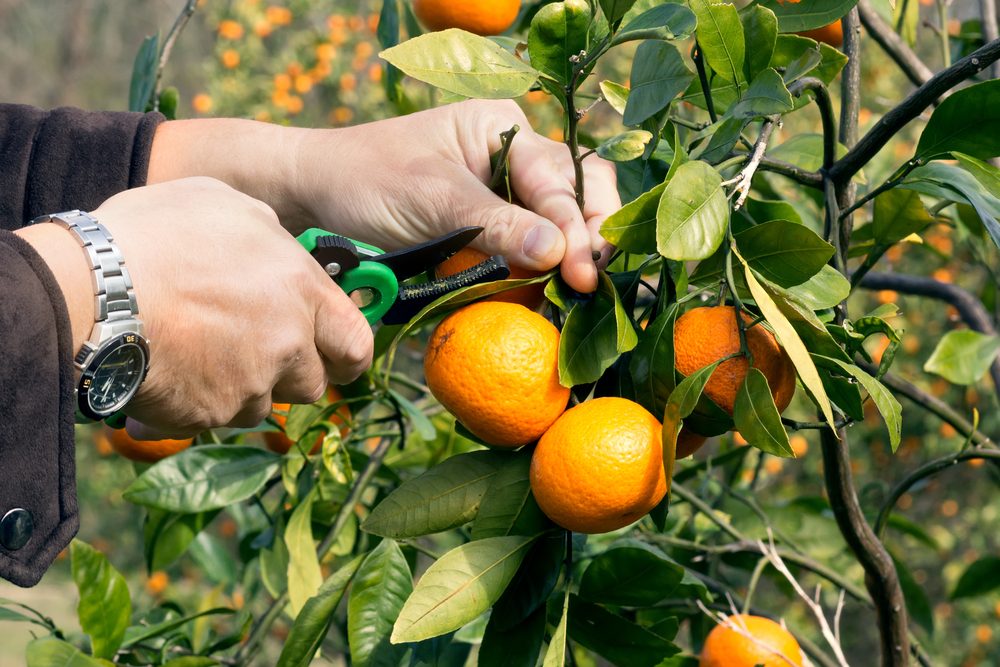With the arrival of spring and sunny days, you are likely considering how to prepare your fruit trees for a bountiful harvest. But where to start? Be cautious! Not all fruit trees should be pruned in this season. Here’s a quick overview of the varieties you should prioritize pruning in spring to maximize your yield.
Pruning a fig tree in spring: what steps to take?
Do you know what variety of fig tree you have in your garden? There are:
- Unifera fig trees, suited for regions with cold winters, producing one crop per year (late summer).
- Bifera fig trees, intended for mild climates, yielding two successive crops (summer and fall).
Spring pruning is mainly suitable for unifera fig trees in late winter or early spring. Shorten the main branches by about one-third and cut the secondary branches just above the third bud from the base to stimulate growth and fruiting.
Be cautious! For bifera fig trees, spring pruning could jeopardize the summer yield. Save this task for autumn.
When to prune citrus in spring?
If you grow orange, lemon, or clementine trees, these trees need regular pruning, especially if grown in pots. The goal is clear: prevent diseases while promoting good yields.
The ideal period is late winter to early spring, from February to April, after fruiting. Just avoid freezing periods to facilitate healing and keep your trees vigorous.
The olive tree: practical tips for successful pruning in spring
Your olive tree also benefits from spring pruning, from March until mid-May, right after the last frosts and just before flowering. But how should you proceed to encourage the growth and fruiting of your tree?
Here are three types of pruning to carry out depending on your olive tree’s age and condition:
- Formation pruning: suitable for young trees to structure them. In the early years, cut the shoots on the trunk. In the fourth year, select four or five main branches and remove the center shoot.
- Annual maintenance pruning: light pruning to eliminate broken branches, those poorly oriented inward, or hanging too low.
- Fruiting pruning: every three to four years, remove branches that have already borne fruit and shorten overly long branches to promote future olives.
Tailored to each situation, these pruning methods will give your olive tree a balanced shape and ideally stimulate your harvests.
How to prune your stone fruit trees in spring?
Apricot, cherry, and plum trees are known to be sensitive to pests and diseases, which is why pruning them in winter is discouraged. Since their flowering occurs on new wood (less than one year old), a light pruning at the end of spring will be ideal.
The aim? To direct all the tree’s energy towards fruiting. To achieve this, prune branches that bear no fruit or are growing inward towards the tree. Also, remove branches that cross or come into contact with one another, promoting good air circulation.
The vine: spring pruning, an essential step
Are you a fan of home-grown grapes? To maintain a healthy vine in your garden, practice regular pruning, especially if the vine is trained along a trellis. In spring, green pruning in May-June ensures better fruiting.
Your main actions this season include:
- Removing excess leaves and unnecessary small bunches.
- Pinching the shoots counting two leaves after the last retained bunch.
- Shortening the branches without fruit by about 50 cm.
The more the vine breathes, the more generous the grape clusters will be at harvest time.
And you, what fruit trees do you have in your garden? Have you started your spring pruning or do you plan to begin soon? What are your best tips for successfully pruning your fruit trees? Share your experience in the comments; we would love to hear from you!

